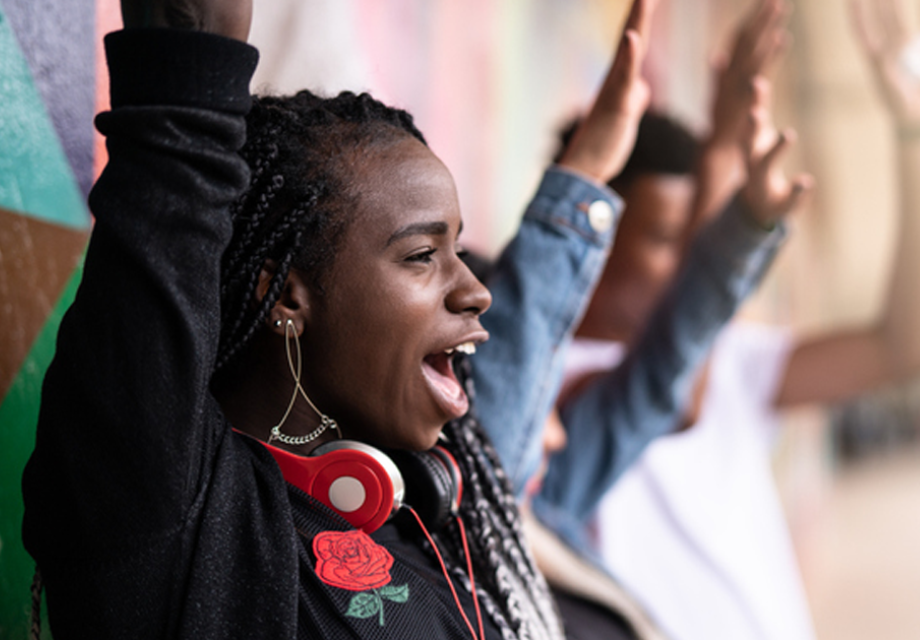Can traditional healers and health clinics work together to improve the sexual health of adolescents?
Hester Phillips
10 November 2021
Researchers in rural Zimbabwe have suggested five ways to improve collaboration to address high rates of STIs facing adolescents
Finding ways for health clinics and traditional health providers to work together could improve sexual health services for adolescents, new research suggests.
What is the research about?
Researchers have developed five strategies to help modern and traditional health providers work together.
The research took place in Mberengwa and Umguza. These are rural districts in Zimbabwe where people rely on both types of health services. In both areas, adolescents are also experiencing high levels of sexually transmitted infections (STI), HIV and unwanted pregnancies.
Experts on adolescent sexual health, health systems, culture and policy helped develop the strategies. It is unclear whether adolescents from Mberengwa and Umguza were also consulted.
Why is this research important?
It is important to understand the limitations of traditional medicine in terms of treating HIV and STIs and in preventing pregnancy. Only modern medicine, such as antiretroviral treatment, can effectively treat HIV, for example.
But many people in Zimbabwe and other countries use traditional healthcare providers, such as traditional healers. This is especially true in rural areas where there are fewer modern health facilities. This means they have an influential role to play in people’s health and behaviour, including on adolescents. But despite the popularity of traditional health services, there has been little focus on how modern and traditional practitioners could work together.
What did they find out?
Modern and traditional health services have similar goals and are willing to work together. But each side mistrusts the other due to their different belief systems. Finding common ground, based on the shared goal of promoting health, is key to overcoming this.
The following five strategies could help bring modern and traditional health providers together:
1: Create inclusive local committees
The committees should include health service providers, traditional health practitioners, police, traditional leaders, non-governmental organisations, parent or guardian representatives and researchers. The study does not mention the need to include adolescents, but this is worth considering.
The committee should create a ‘teamwork approach’ to improving adolescent sexual health. It should aid information sharing and fundraise for sexual health-related activities and services.
2: Give space to traditional health practitioners in clinics
This would encourage collaboration between the two types of healthcare providers. It would enable traditional health providers to refer adolescents to modern health services.
3: Establish adolescent-friendly clinics
The suggested strategy is to improve the way both modern and traditional health providers communicate with adolescents. Other strategies to make clinics adolescent friendly include the use of peer educators.
4: Increase adolescents’ access to sexual health information
Provide clear information about sexual health issues, and the services available. Then share it through social media and training workshops.
5: Develop clear procedures and Terms of Reference to oversee collaboration
Procedures should focus on collaboration and conflict resolution to create an efficient referral system between the two systems. Terms of References should outline how integration will work so everyone involved knows what to do and what to expect.
There is also a need for:
- funding and investment in human resources to kick-start the collaboration
- intensive training and awareness campaigns about working together for people involved on both sides
- more consultations with key actors.
What does this mean for HIV services?
These strategies could help make modern and traditional sexual health programmes for adolescents complement each other, rather than being in conflict.
If you are working on adolescent sexual health could some of these strategies improve your services?
Working with traditional health providers could help you reach adolescents who use these services. And it might make traditional health providers feel more comfortable to refer adolescents to modern sexual health services to prevent or treat HIV and STIs or to prevent pregnancy.
If you are thinking about collaborating, make sure that working with traditional health practitioners will improve services for the adolescents you support. The best way to do this is to involve adolescents in your planning, activities and evaluation.
Get our news and blogs by email
Keep up-to-date with all our latest news stories and blogs by signing up to the Be in the KNOW news digest.
